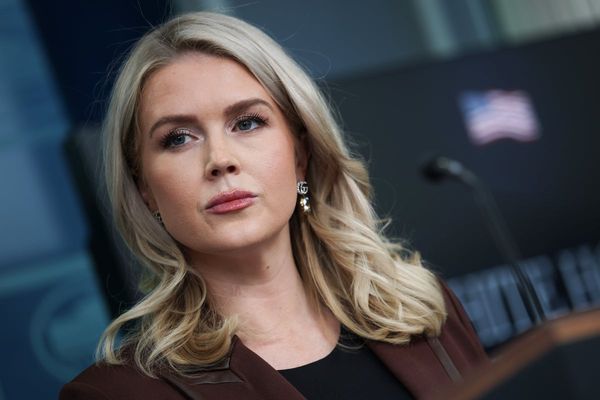
I think about Phyllida Barlow all the time. I came to London in 2001 to do an MA at the Slade school of art, finishing in 2003, a year before Phyllida did the show at the Baltic Gateshead that finally turned the art world’s head her way and three years before she retired from teaching to ever-increasing fame.
Phyllida’s was the kind of late-onset fairytale fame that truly does spur a grifter on, with its whisper of “it could be me” – but for me, anyway, that’s not why every single new break she got after leaving the Slade was such a thrill. And it wasn’t because I knew her, and had been taught by her. I cheered because she was so special. She knew how to listen and how to really, truly see. And she cared, so very deeply, about art and the people trying to make it.
Her work was confounding, it did not let you go. For her debut solo show in 2011 at Hauser and Wirth in London, entitled Rig, she had a forest of what looked like wave-breaking slabs and fabric shelters perched atop outsized matchsticks rammed into clotted clay, lumpen on the parquet. Giant pompoms hung from the rafters, metal rafts threatened to break through the ceilings, sheets of coloured felt stood compact and layered, shaped into the bulk of a pommel horse, everything strained against the confines of the building. Phyllida’s erudition - her knowledge of her medium - was stunning for its natural flow, its complete lack of ego, her refutal of beauty, her willingness to break things.
She made work that made you want to make work. Towards the end of my time at the Slade, I played her a sound piece I’d made. She listened intently. Her eyes gleamed when she spoke about what she’d heard and her joy was palpable. She said it made her want to make something.
In 2010, she organised an evening of experimental music to accompany the two-person show she was doing at the Serpentine. She asked me to take part. “It’s the opportunity to do something that’s not familiar to me critically, and trying to embrace that… It’s beyond my radar,” she told the curators. “It’s to keep this excitement about this subject of sculpture alive.”

Psychologists talk about an enchanted world view – disenchantment’s opposite – and Phyllida embodied exactly that. When Charlotte Higgins wrote that brilliant profile of her in 2017 – Bish bash bosh: how Phyllida Barlow conquered the art world at 73 – I sent it to my father. I stuck bits of it on my wall. I texted it and emailed it and copied bits out of it by hand, especially this bit: “She has, she said, always made her art ‘as if a storm were coming’.” It got to the nub of what made Phyllida’s opinions – questions, more often – something you always paid attention to.
I love that when her children were young, she’d sometimes only have enough time to make a piece for a day and then throw it in the Thames. When my child was four and just getting through a work day felt like climbing not just over but down into, through and under a mountain, I would read about polar explorers and their fabulous exploits – people going to the edges of the world and pushing the limits of what’s possible – and actually balk at the way they held me in their grip. My fascination was just so immensely irritating. Because these explorers were usually men, whose wife was at home not only looking after their kids alone while he was gone, but also most certainly contemplating the very real possibility that he might not come back.
And it wasn’t just the explorers. It was the artists too. As a kind of life-saving counterweight, I would think about Phyllida. How she told Higgins that having children and making art was “impossible”, “incompatible”, that they both require uncompromising focus – but that, of course, you do it anyway, despite how “extremely complicated mentally” that is. She got it.
Throw into the mix that she was a teacher for 40 years, whose dedication to the task was never begrudging, and you’ve got something remarkable. I have peers from the Slade who now exhibit the world over, others who have become inspirational teachers, many who are now parents. Some are attempting to do all three things. None of it is even remotely easy. Phyllida’s grace, amid the chaos her work so succinctly captured, will never not surprise me.
The reason I still hold on to these words is the same reason I remember every exchange I ever had with her at the Slade and afterwards. It wasn’t because she was famous or that I was doing great things. She wasn’t then, not yet, and I’m still not. It was her generosity of being.
Art school is a lot like primary school – lots of big feelings but never enough words and almost constant bewilderment. And just as I would move actual mountains for those teachers of my daughter who get her, who see every singlechild and love them like bedrock, I would have done anything for Phyllida too.
I doubt she knew this, and can’t be sure she remembered me. But she was that teacher. That person that if you’d had her in primary school, now, at 46, you’d still think of her as Miss Barlow, but you had her at art school, and so 20, 30, 40 years on into a lifelong battle with artmaking – or writing, or parenting, or just being a decent human – you’re still striving to make something she’d rate.
Dale Berning Sawa is a freelance writer based in London







